Third compilation of best poverty reduction case studies released
China.org.cn/Chinagate.cn by Jin Ling, November 22, 2022 Adjust font size:
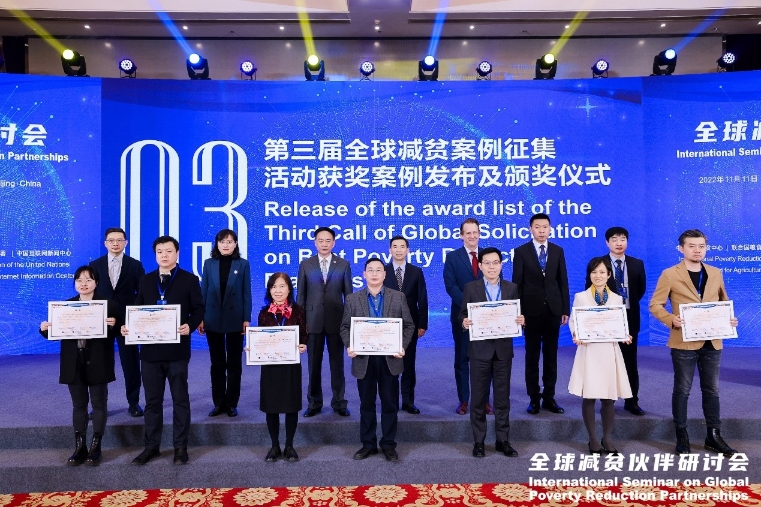
Individuals and representatives of organizations that submitted case studies during the third call of the Global Solicitation on Best Poverty Reduction Practices and other attendees pose with award certificates at the 2022 International Seminar on Global Poverty Reduction Partnerships, which was held in Beijing on Nov. 11. One hundred and four of the 517 case studies that were received were recognized at the event. [Photo/China.org.cn]
On Nov. 11, 104 of the case studies that were collected during the third call of the Global Solicitation on Best Poverty Reduction Practices were recognized for their excellence at the 2022 International Seminar on Global Poverty Reduction Partnerships in Beijing, and the fourth round of solicitation was subsequently launched.
More than 100 guests from relevant government departments, United Nations agencies, other international organizations, diplomatic missions, NGOs, academia, and the private sector attended the seminar in person or online.
Initially launched by the Asian Development Bank (ADB), the China Internet Information Center (CIIC), the International Poverty Reduction Center in China (IPRCC), the World Bank (WB), and three United Nations Rome-based Agencies – the Food and Agriculture Organization of the United Nations (FAO), the International Fund for Agricultural Development (IFAD), and the World Food Programme (WFP) in 2018, the Global Solicitation on Best Poverty Reduction Practices was created in order to encourage individuals and organizations around the world to submit case studies that may serve as inspiring reference material. The campaign is also an attempt to contribute to the formation of innovative global poverty alleviation partnerships that pool the strengths of various parties. A total of 1,831 case studies have been collected to date.
More than 200 of the 517 case studies that were received during the third round were submitted by NGOs and international organizations, such as the Bill & Melinda Gates Foundation, the United Nations Development Programme, and the United Nations Centre for Sustainable Agricultural Mechanization, as well as research institutions, like the Oxford Poverty and Human Development Initiative and the African Center for Economic Transformation, and describe projects that were implemented in over 50 countries, such as Afghanistan, Nepal, Vietnam, Malaysia, the Philippines, Laos, Cambodia, Myanmar and India.
The 104 case studies that were recognized during the third round will be added to the Global Poverty Reduction Online Knowledge Sharing Database (http://south.china.org.cn/#/), related visuals will also be uploaded and made available elsewhere, and some of the case studies that were received will be published in book form in order to promote the development of a global community with a shared future that is free from poverty and enjoys common prosperity.
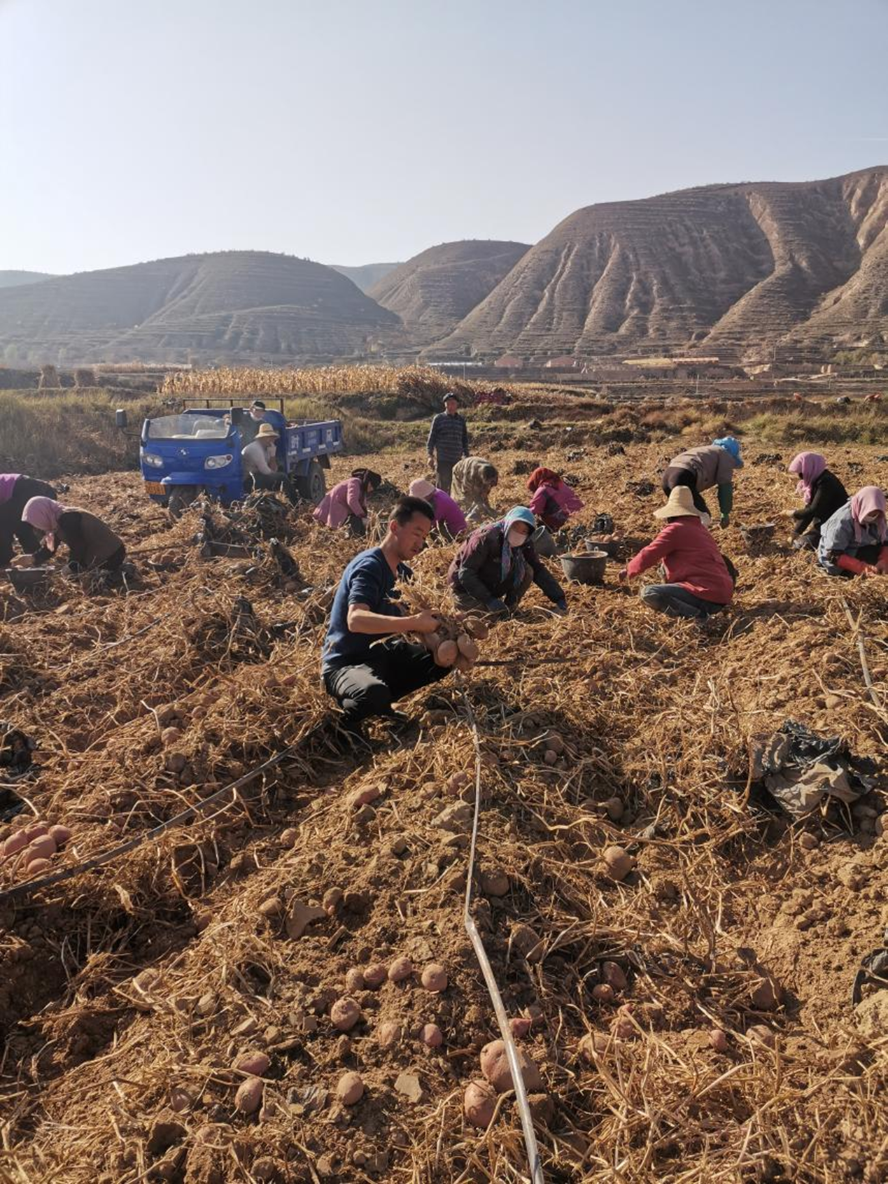
Farmers harvest zinc-enriched potatoes in Gansu province. Participating in a project described in the “Eradicating Hidden Hunger and Advancing Rural Vitalization -- The Pilot Program of Supporting Small Farmers in Growing Zinc-Rich Potatoes by World Food Programme” case study, which was later recognized for its excellence at the 2022 International Seminar on Global Poverty Reduction Partnerships, has enabled them to increase their incomes. (Photo from the stated case study)
A number of case studies covering various innovative models and practices related to eradicating poverty via industrial development, green development, development of the digital economy, and COVID-19 prevention and control that have been implemented in China were among those that were recognized for their excellence. A case study submitted by the WFP, for example, summarizes its experience helping Gansu province eradicate the hidden scourge of zinc deficiency and advance rural vitalization by providing support with zinc-enriched potato cultivation to smallholder farmers. Novel green cultivation and storage systems were built, the nutritional value and added value of the potatoes grown in the areas the project was implemented in increased greatly, farmland pollution has been reduced, and smallholder farmers have become more resilient to climate change and been able to utilize water more efficiently among other benefits and outcomes.
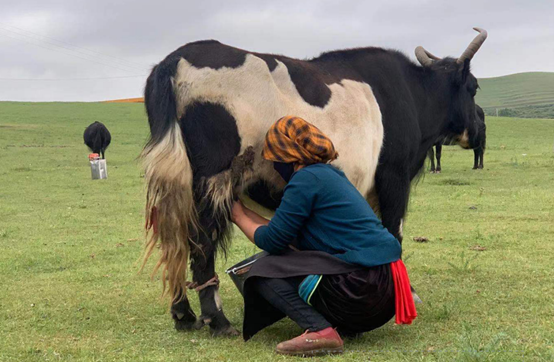
A farmer milks a yak in Gansu province. A project that was captured in the award-winning “Casein Making Helps Herdsmen Increase Income – Public-Private Partnership Contributes to Industrial Upgrading in Pasturing Area in Gansu” case study has made it possible for dairy farmers in the province to increase their incomes. (Photo from the stated case study)
Another case study describes a project in which a public-private partnership contributed to industrial upgrade in grassland areas in Gansu, Qinghai, Tibet, Sichuan, Yunnan, and other provinces and autonomous regions. Measures such as construction of facilities that convert the abundance of a rich, fermented, dried milk residue known as Qula that is produced in them into casein and provision of technical support courtesy of Gansu Hualing Dairy Co. Ltd. have enabled dairy farmers in the administrative areas that the project has been implemented in to increase their incomes.
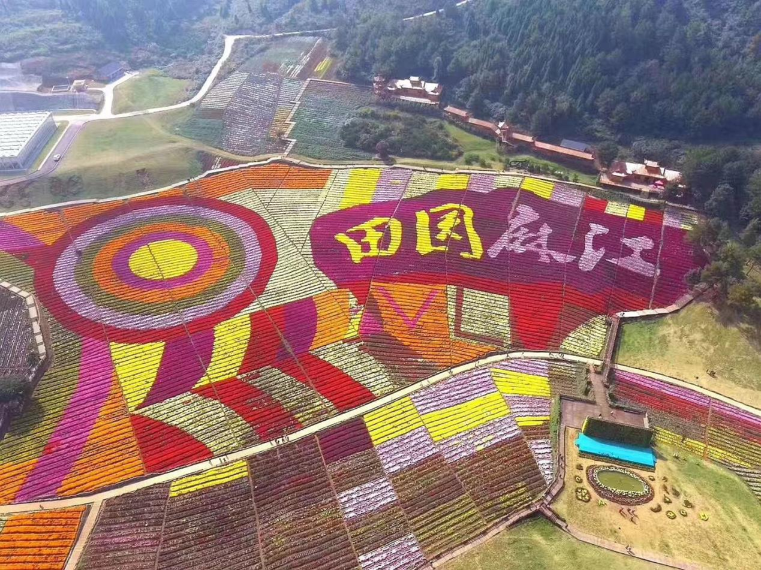
A view of the Yaogu Jiangcun (“Herbaceous Valley in a Riverside Village”) chrysanthemum plantation in Majiang county, Qiandongnan Miao and Dong Autonomous Prefecture, Guizhou province. The plantation was established during the implementation of a project that was depicted in the award-winning “Coneflower Creates ‘Golden Valley’ – The Case of Pairing-up Assistance by Nanjing Agricultural University” case study. (Photo from the stated case study)
A case study submitted by Nanjing Agricultural University captures a long-term poverty relief project that the school implemented in a mountainous county situated in the middle of southwest China’s Guizhou province known as Majiang. A chrysanthemum farm known as Yaogu Jiangcun (“Herbaceous Valley in a Riverside Village”) where 400 varieties of the flower are grown across more than 166.6 ha of land – 33.3 mu of which are devoted to ornamental cultivation and tourism and more than 133.3 mu of which are devoted to growing flowers for consumable purposes – was established, and chrysanthemum-based products, such as tea, wine, cake, lipstick, facial masks, and toiletries, were developed in order to form an integrated industrial chain involving agriculture, processing, tourism and culture.
Individuals and organizations around the world who wish to contribute their wisdom to South-South cooperation and general poverty alleviation efforts can do so during the fourth call of the Global Solicitation on Best Poverty Reduction Practices, which runs until April 30, 2023.
Global Solicitation on Best Poverty Reduction Practices (Third Call) award list (in no particular order):
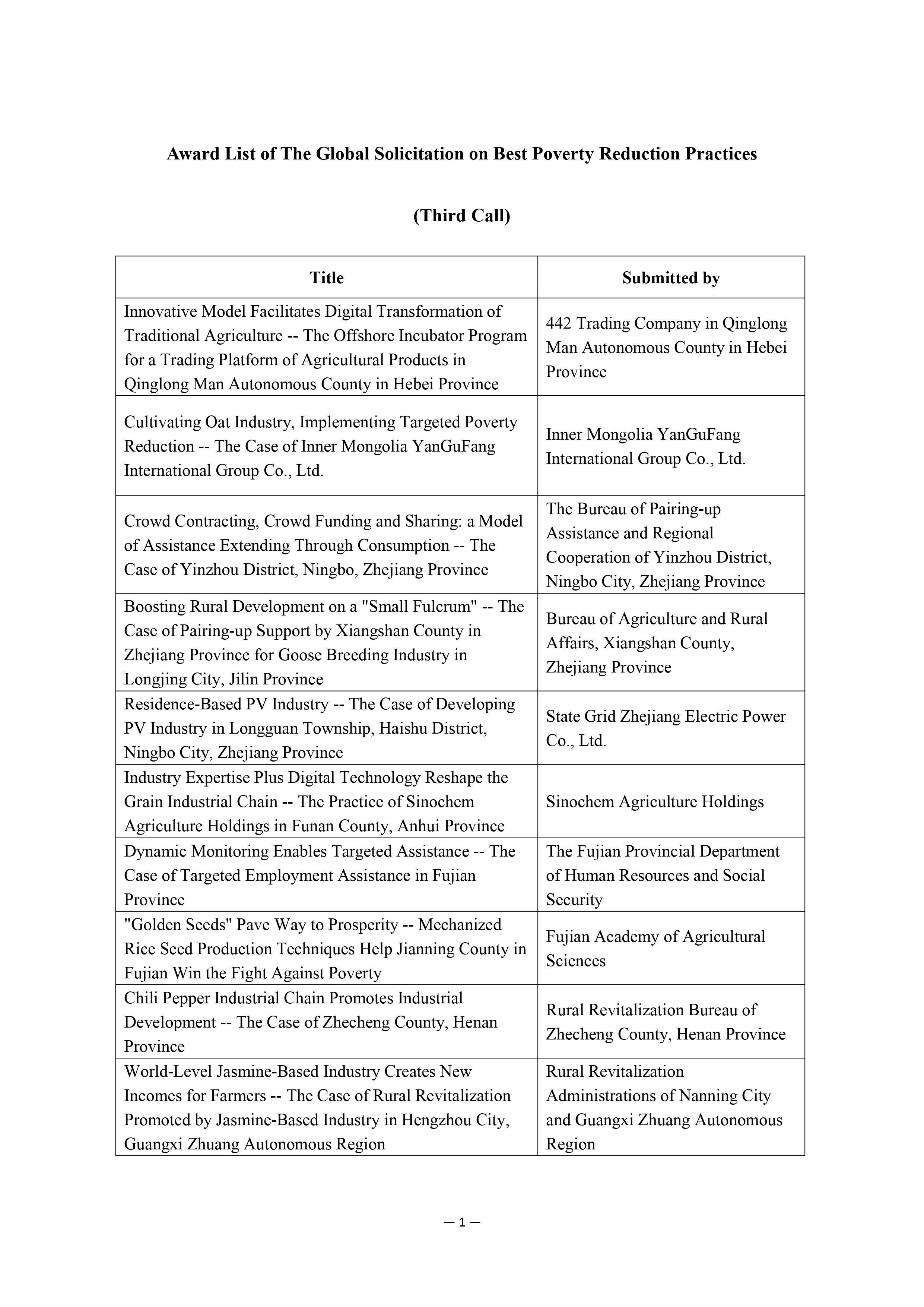
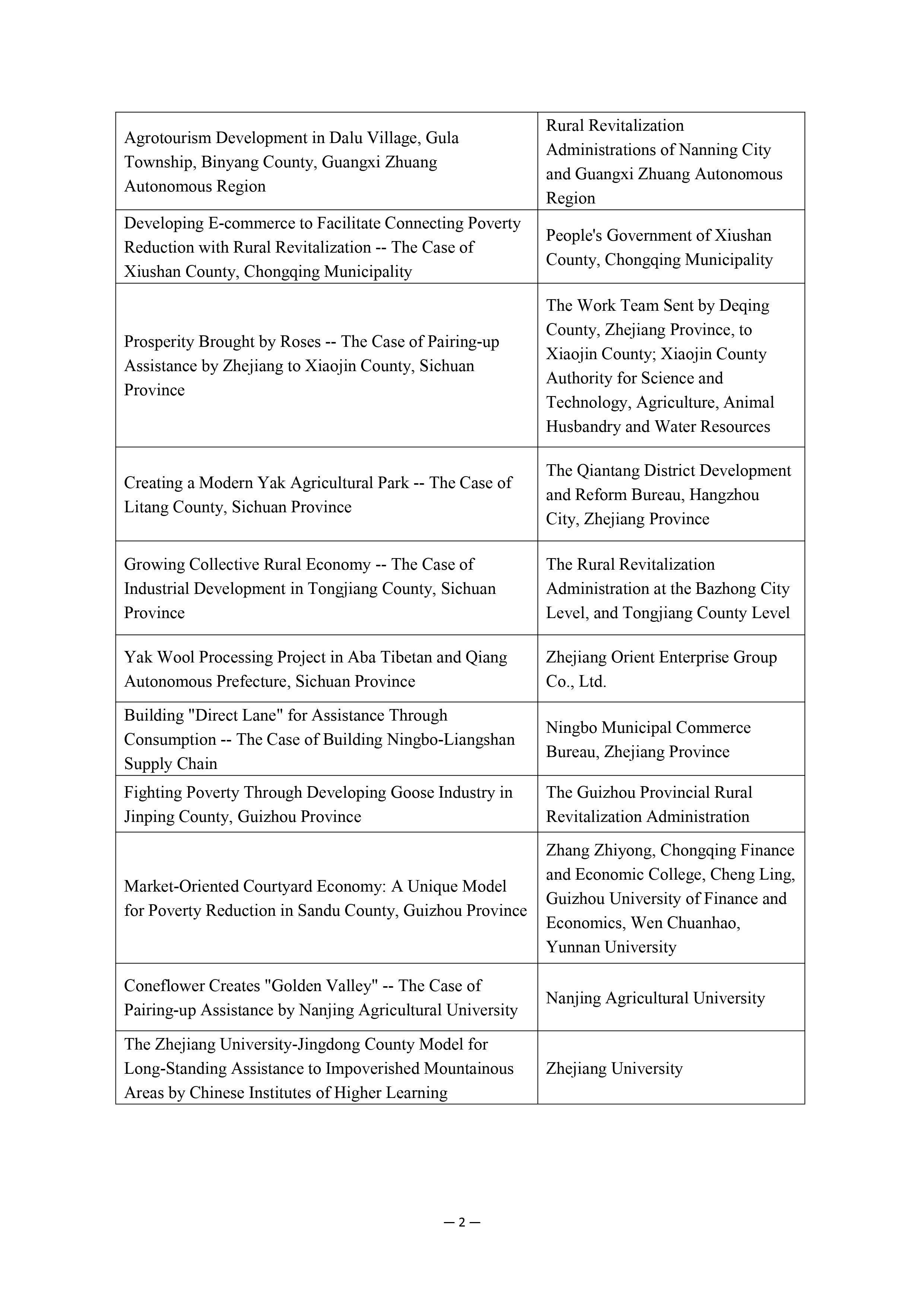
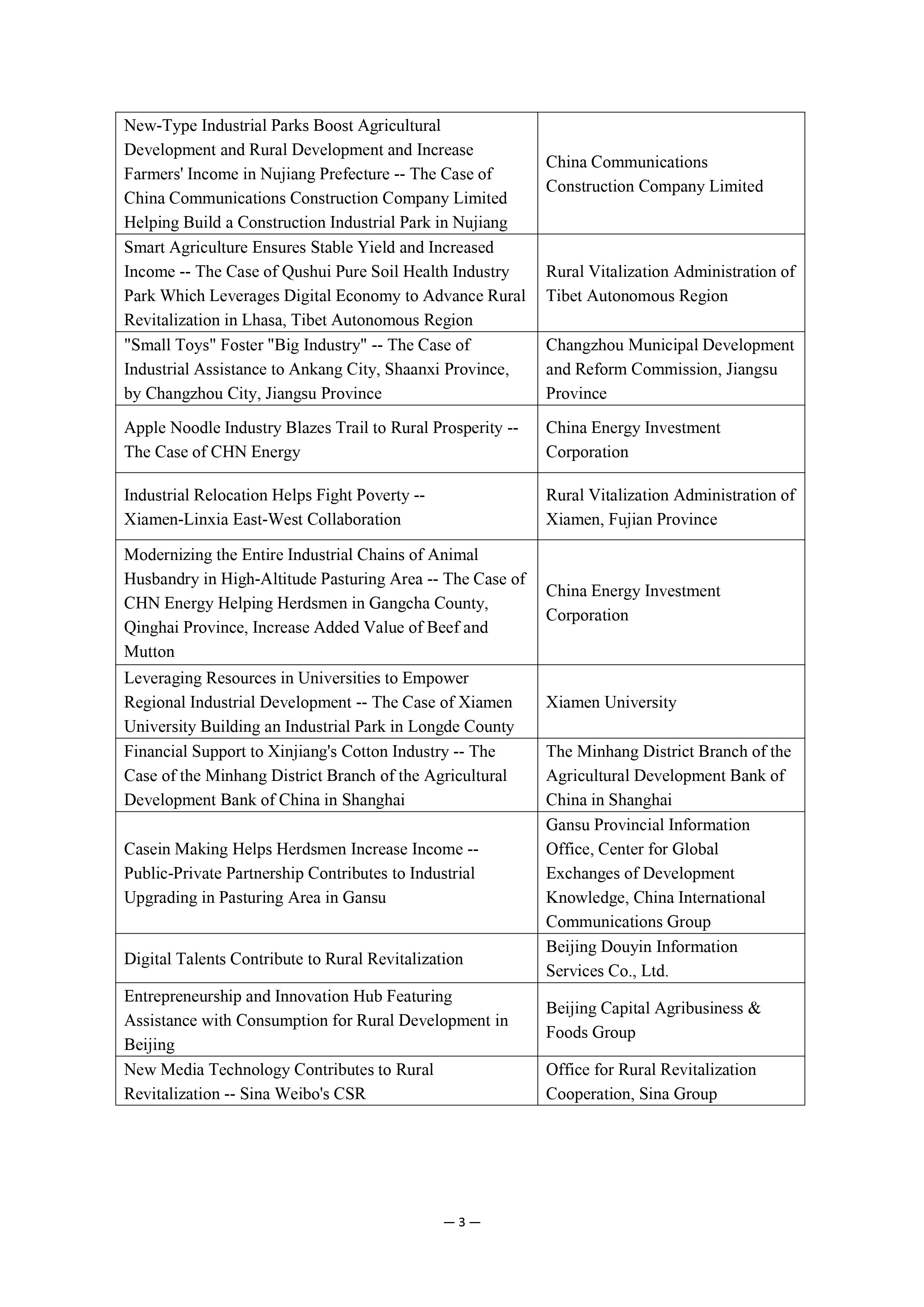
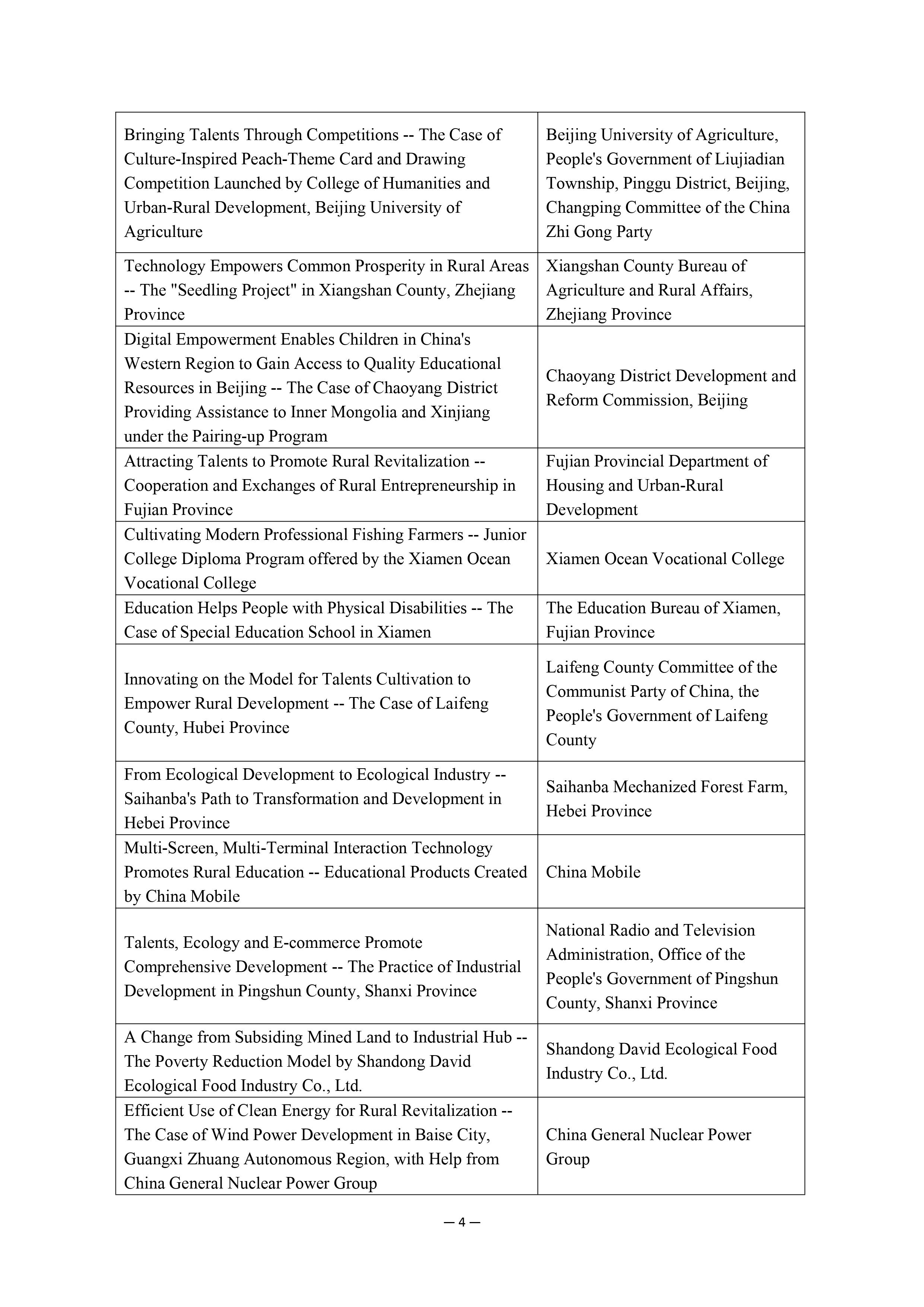
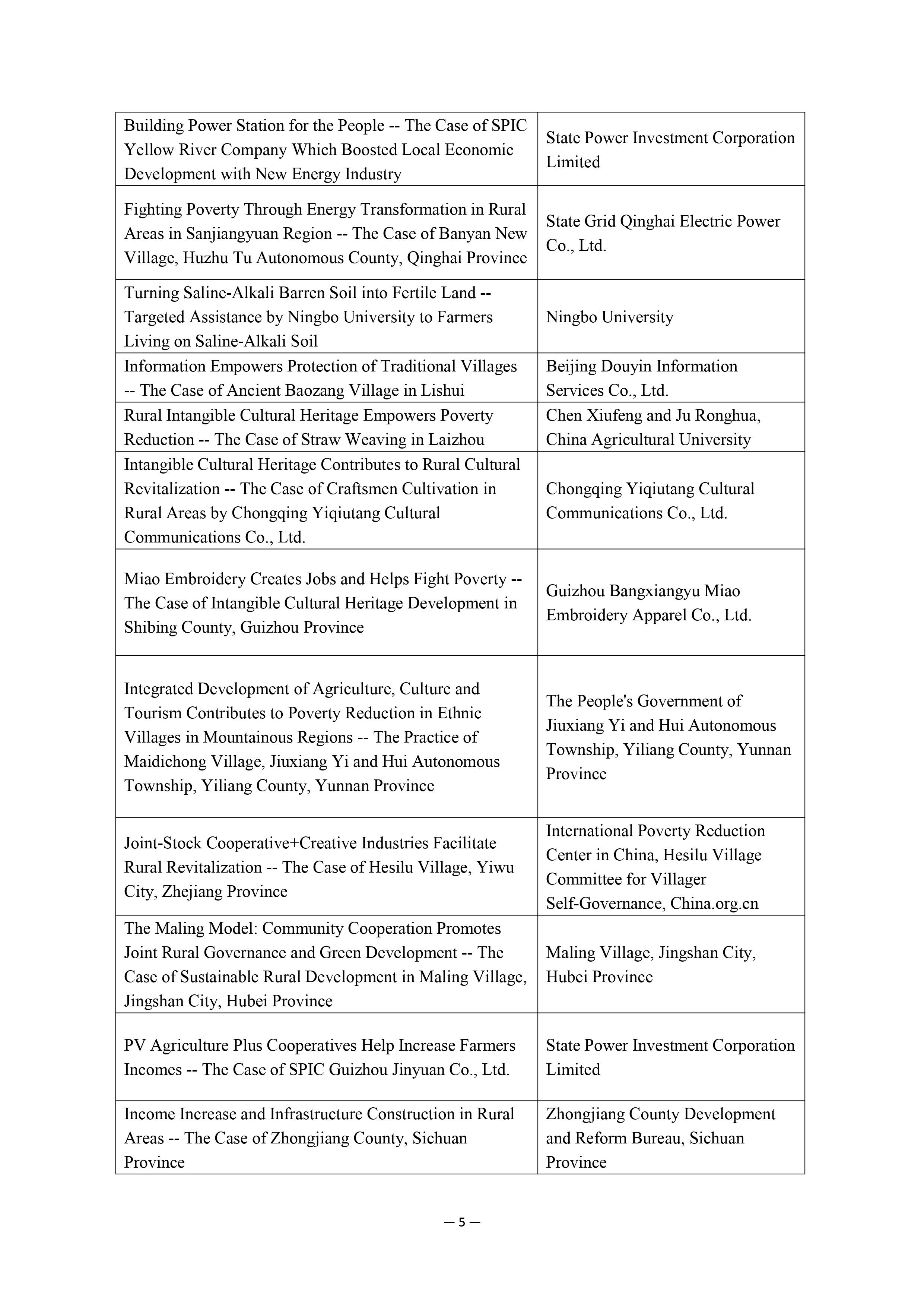
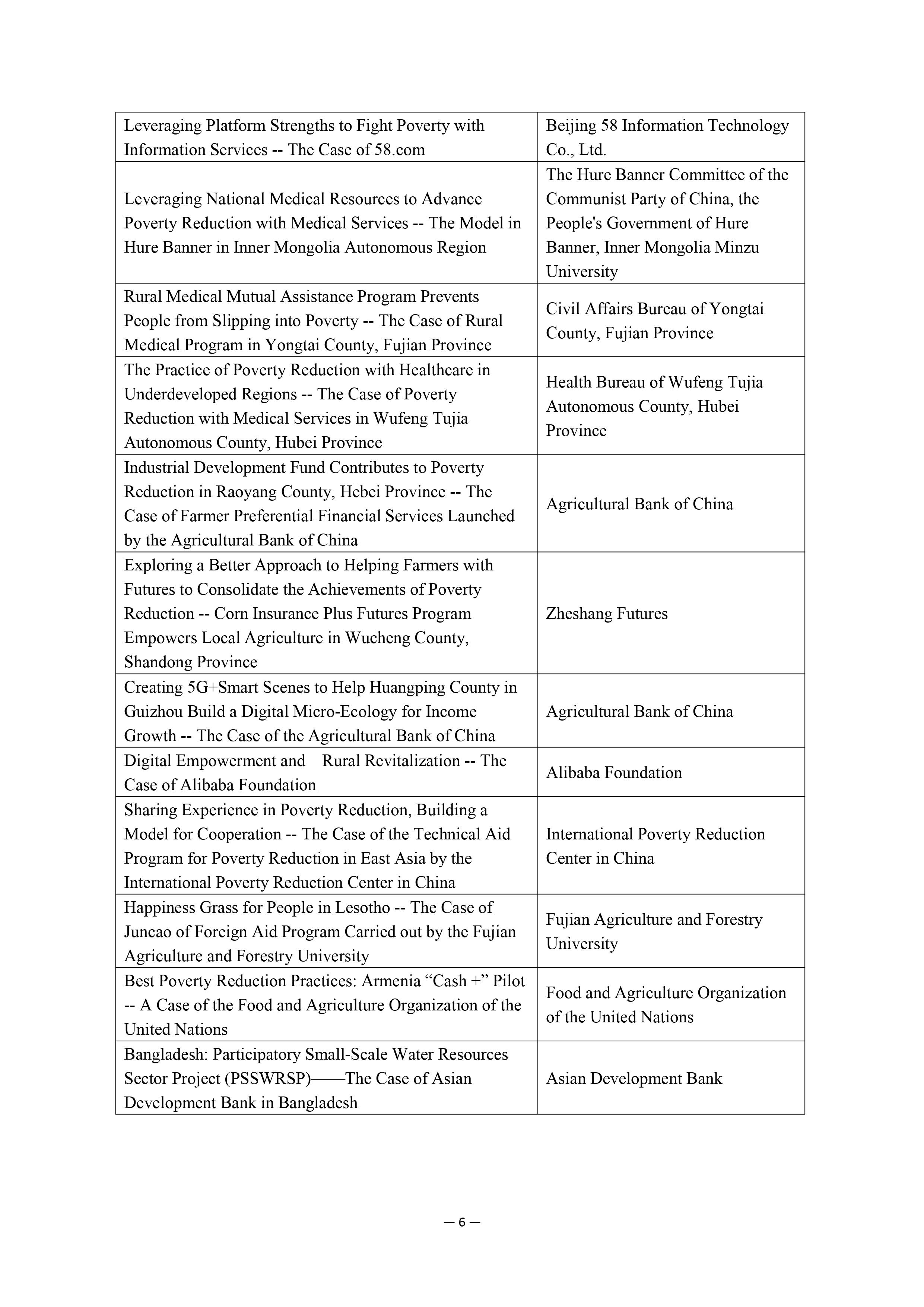
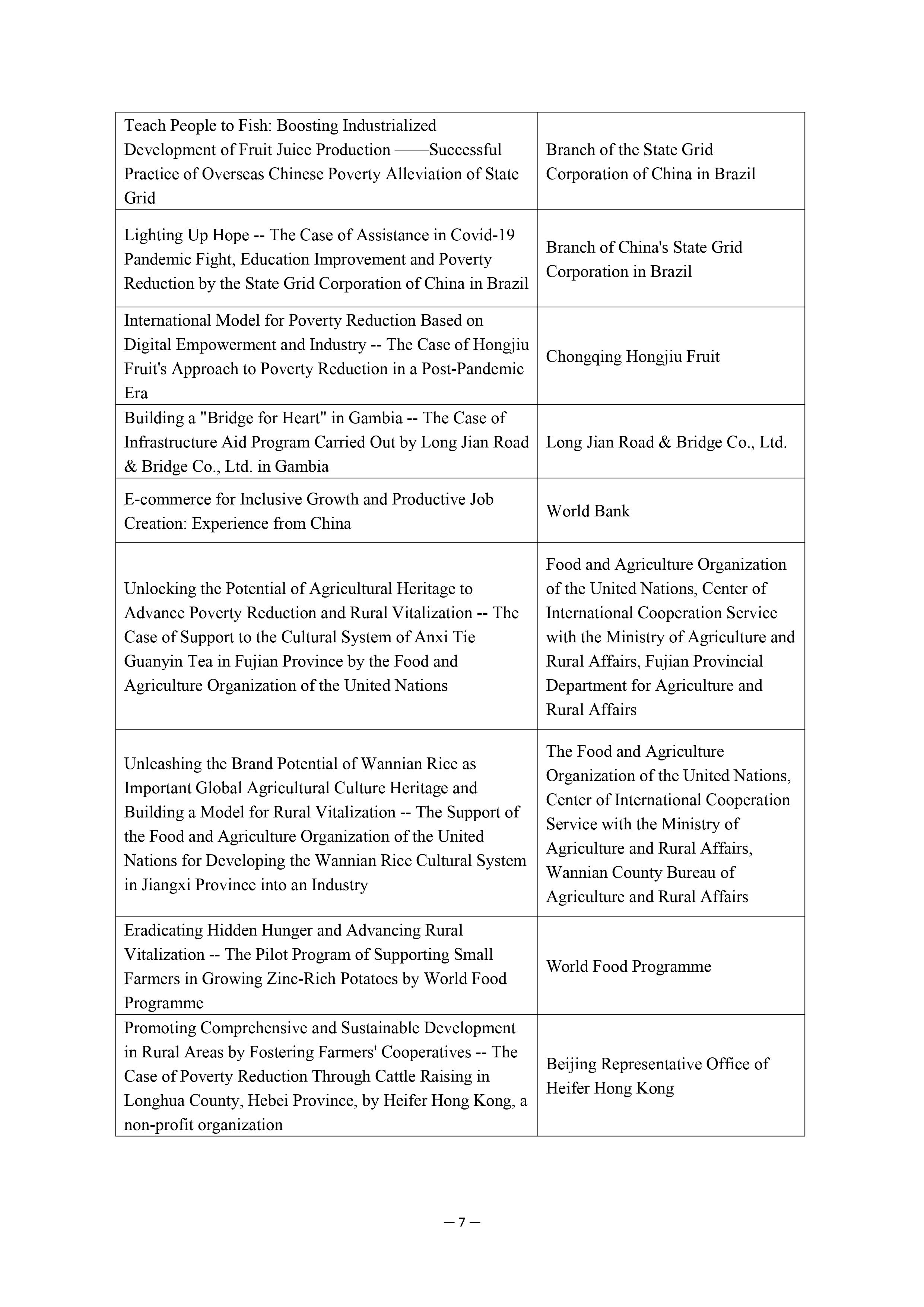
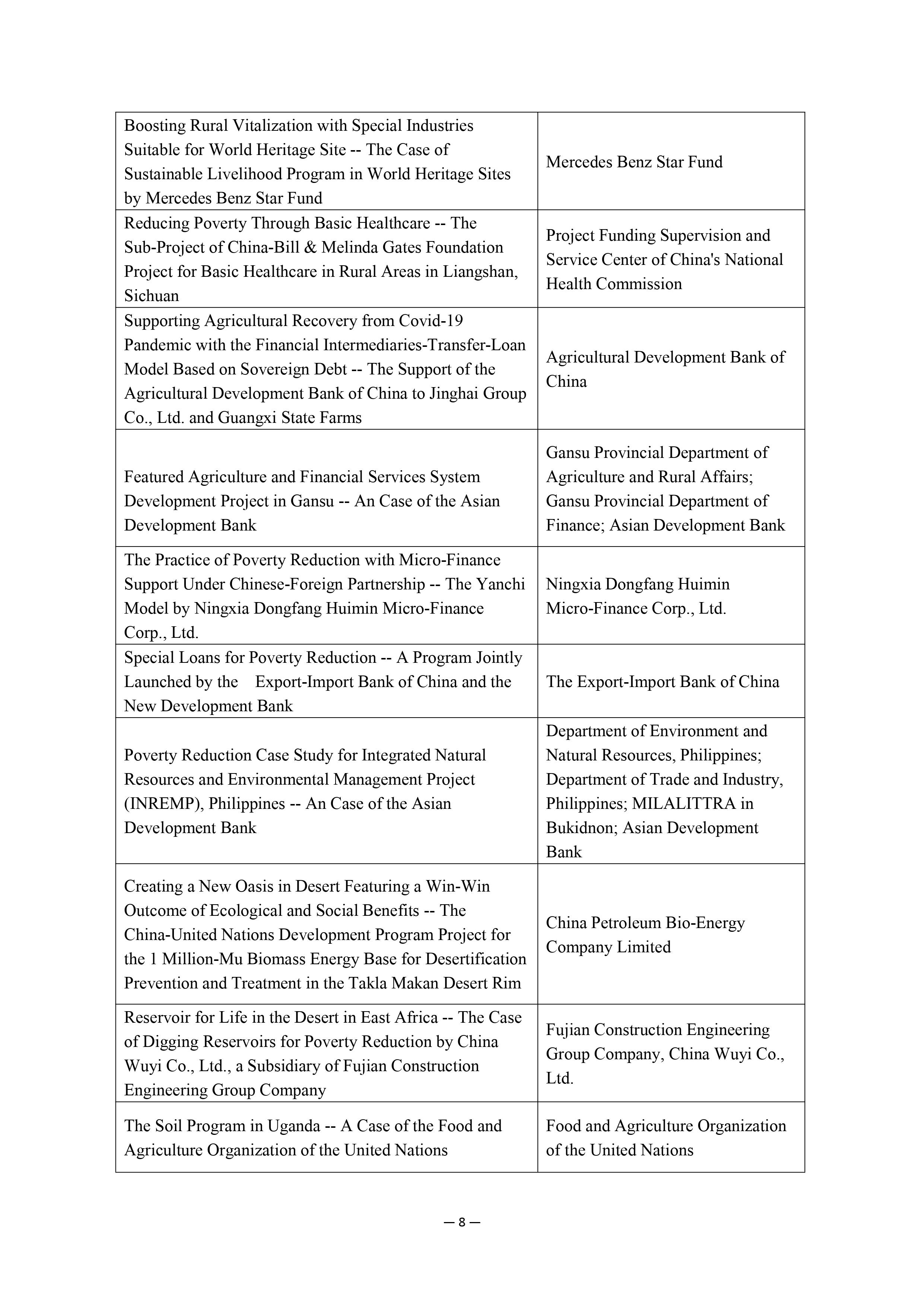
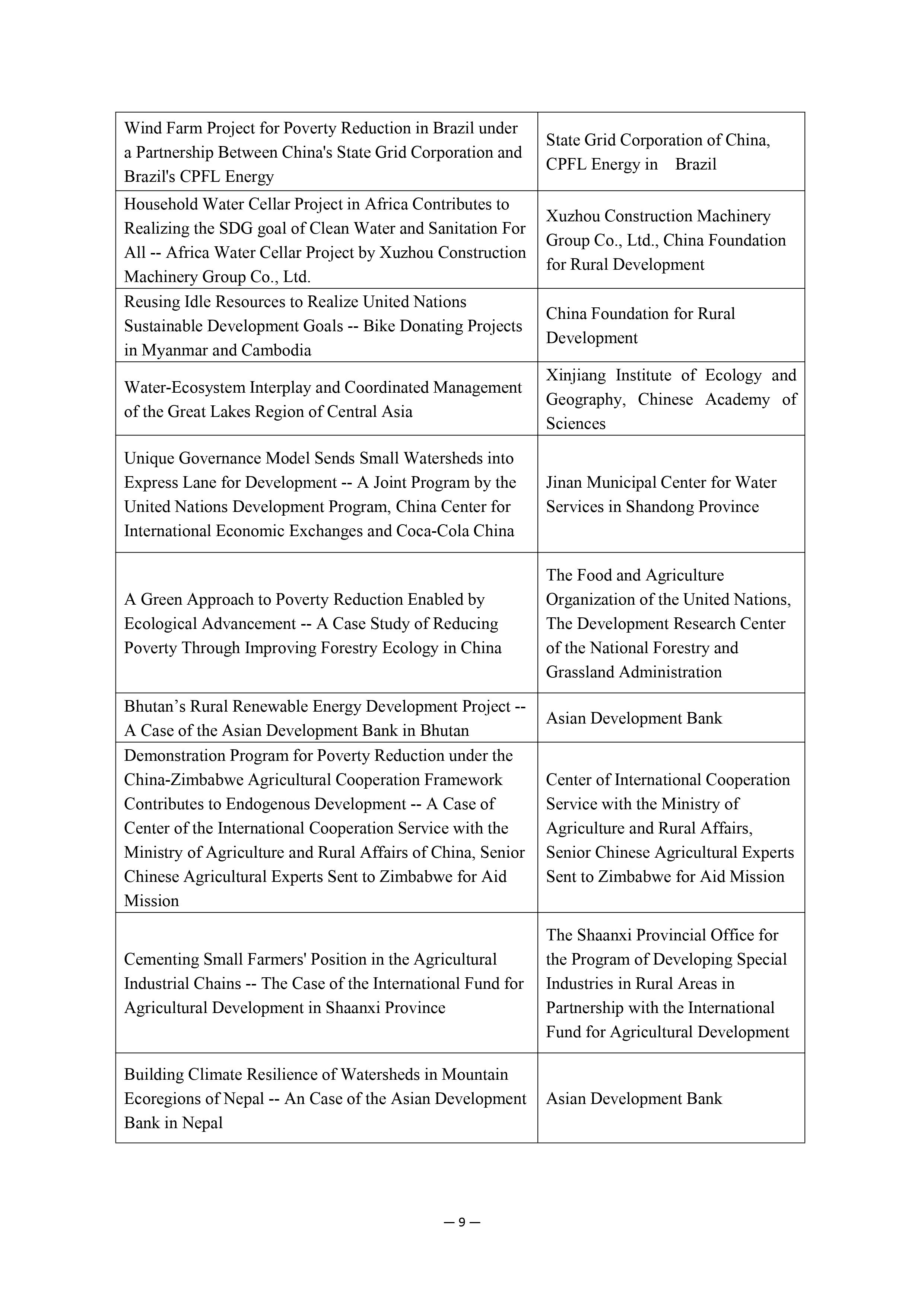
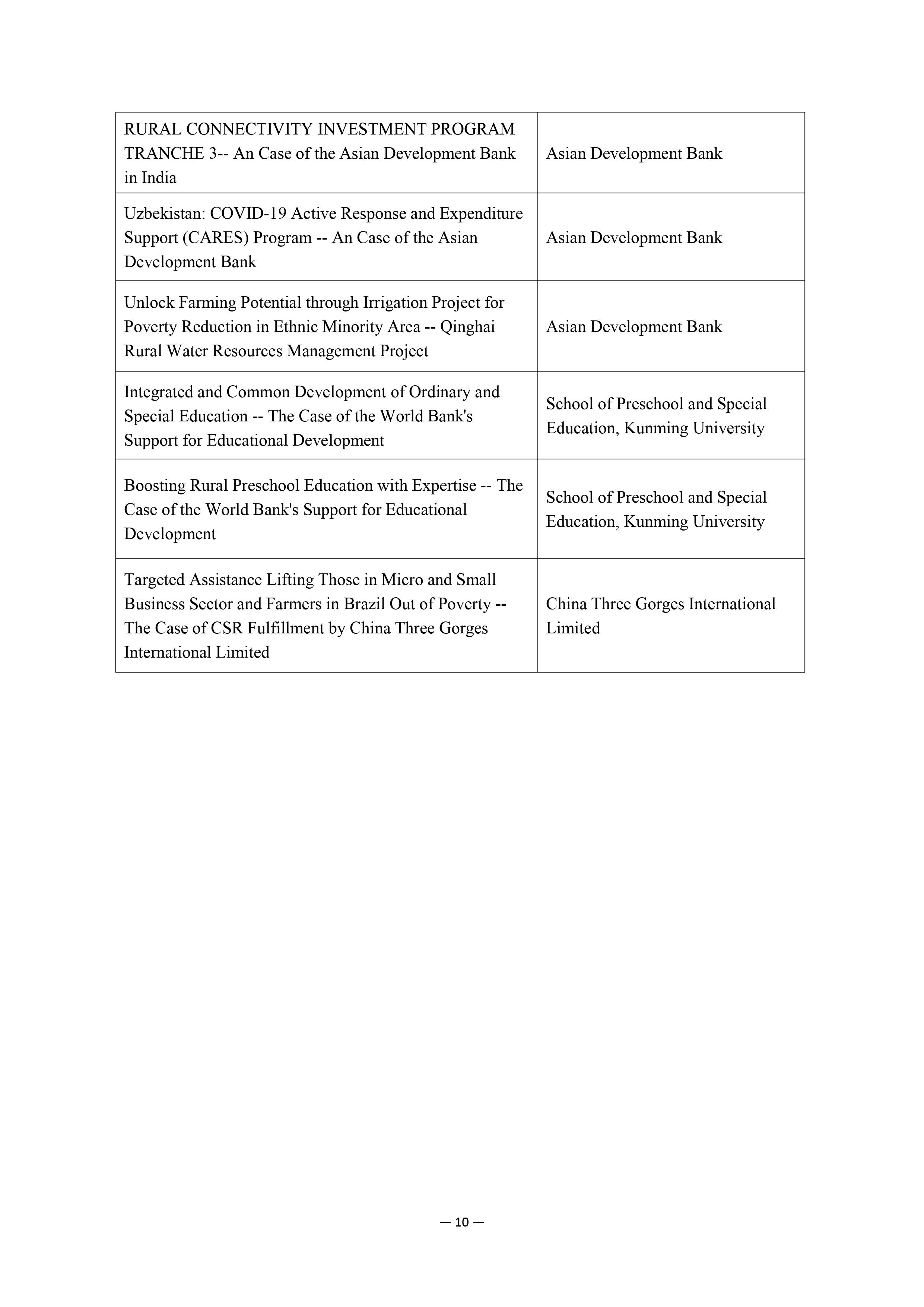
e22bf239-6c31-4ff4-bd2b-422db97857df_zsize.jpg)
